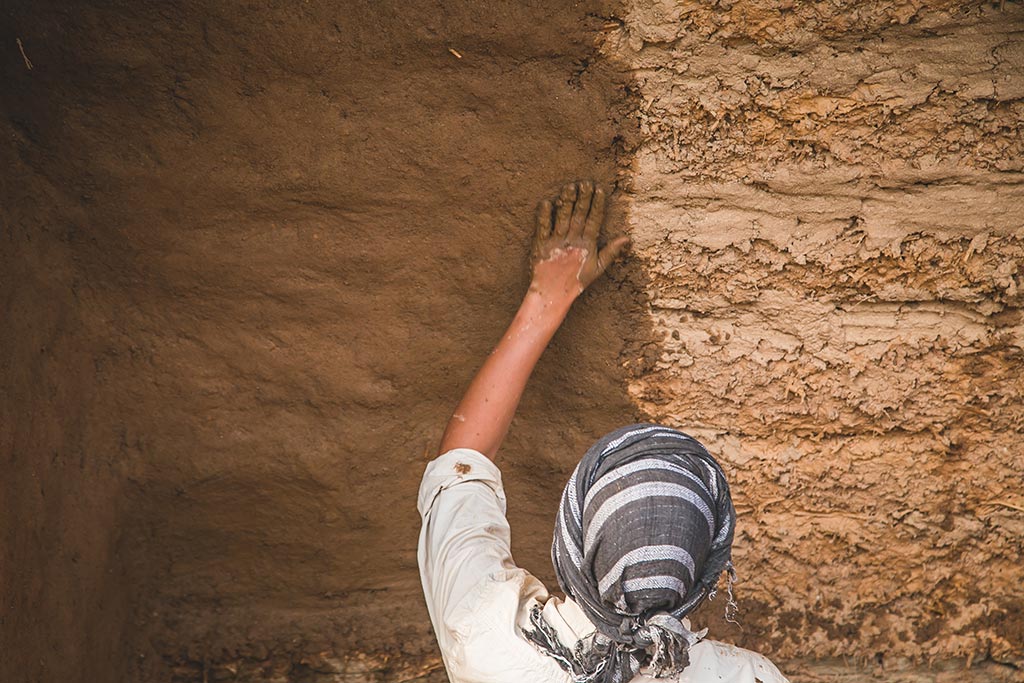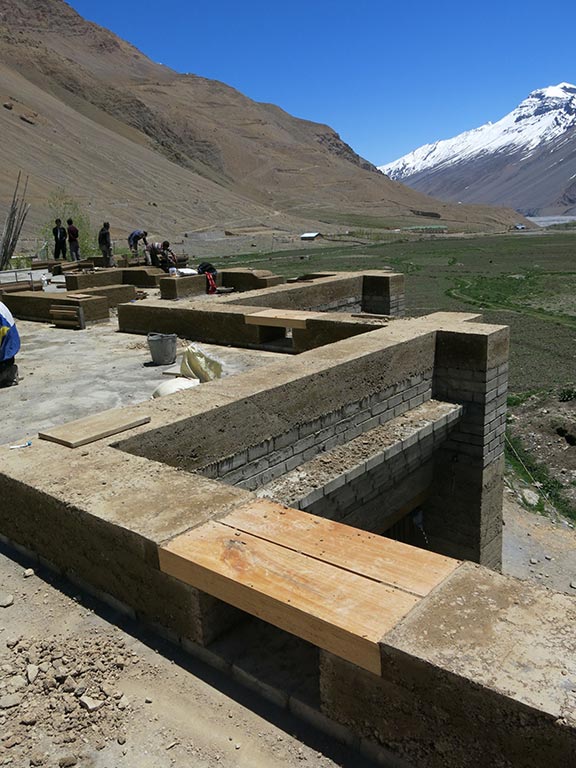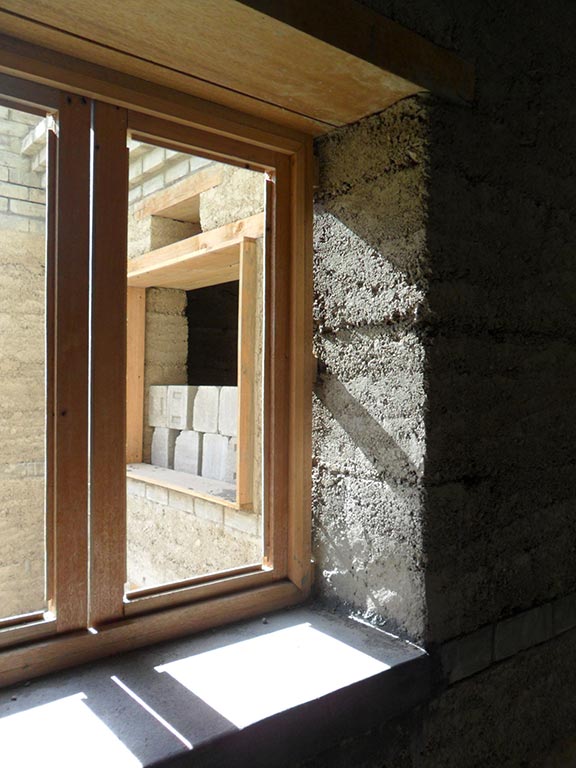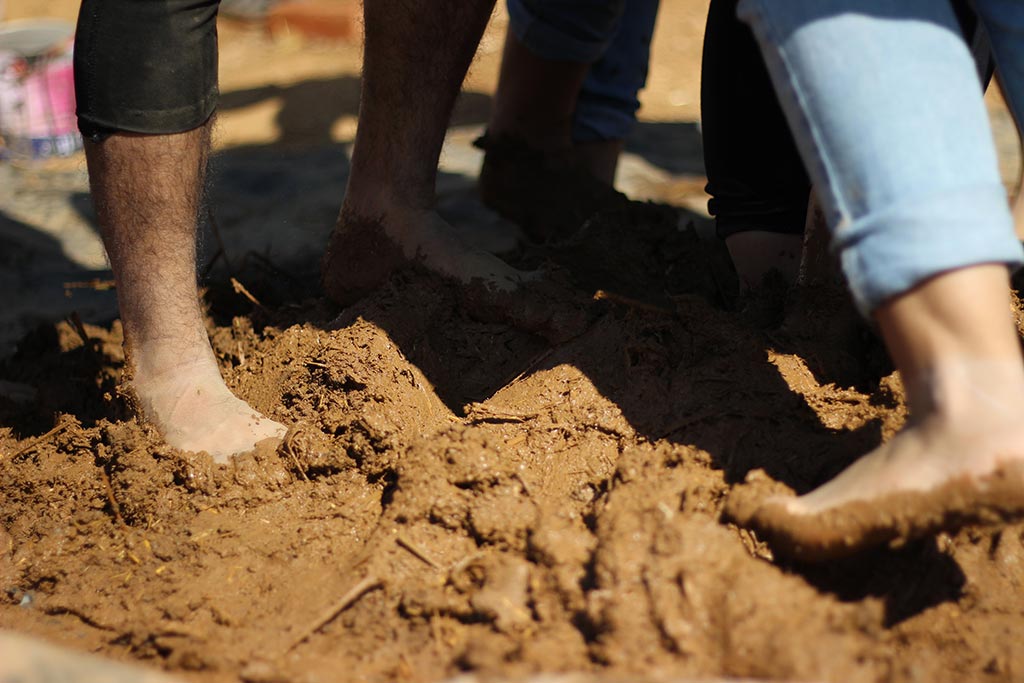Being in Touch
An earth architect introspects on why earth as a renewable material is not only a possible solution to current unsustainable construction trends but also a tactile show of respect to the ecosystem
Swati Negi
Walking barefoot through the moist trails of Sal forest, I would often encounter majestic termite mounds reminiscent of Gaudi’s cathedrals. A particular spot along the trail offered the most sensual tactile experience. Sore feet having traversed muck and gravel would enjoy the luxury of passing through cool moist grass onto a soft clayey pad perfect for wriggling the toes and doodling in mud. In contrast, warm boulders formed a perfect refuge to sit and observe the sunset, and watch the sunlight dance on the termite mounds.
These sculptural structures rising above the ground have always been my muse. The collective consciousness of a community of earthlings giving birth to gravity defying pieces of art with just one element – Earth. Be it the van gujjars dwellings in the forest, kingdoms on remote mountain tops, a humble abode in the desert, a palace along the coast, or a swallow’s nest; earth is the most democratically available resource with endless possibilities.

My journey as an earth architect consisted of years of travel through remote Himalayan villages, where architecture is not a privilege of the elite but an integral part of the cultural expression, where carpenters and masons are not looked at as daily-wage workers; they are revered for their artistic skills. They are the torch-bearers of traditional wisdom. Untouched by industrialisation, prosperity is reflected in the amount of time and effort invested into a task rather than money.
Inspired by the simplicity of their lifestyle, I found myself questioning my fundamental ideologies; an introspection that resulted in shedding all that one can do without, build without, be without. In today’s urban landscape, one can notice a stark disparity resulting from choices guided by economic standards. Modern construction materials are quickly guiding the aesthetic aspirations of the common man, even though it has little to do with functionality and comfort. In contrast to these fashionable, unsustainable construction trends, earth has been successfully used around the world for over 11,000 years by rich and poor alike. Using this renewable material is one way of promoting fairer distribution of resources and showing our respect for the ecosystem.

One of the most common questions asked during our awareness programmes is about the longevity of earth buildings. Back in the day, people had time. It was common for the women of the household to regularly maintain the buildings and patch up the plaster work after every monsoon. Today’s fast-paced lifestyle does not allow people to invest that kind of time into maintenance. Hence, it is important to hybridise traditional techniques with modern innovations and find a balance better suited for the current context. Traditional empirical systems of construction now require a more scientific approach. To this end, a number of institutes are involved in research and implementation of methods using locally available resources to device weather- and hazard-proof solutions.

One of the most rewarding experiences for me was the construction of a community centre in Kaza, a small town located in Spiti Valley at an average altitude of 3,600 m (high-altitude desert climate). The Eco-Community Centre aimed at offering amenities to strengthen local cultural heritage, while providing access to essential facilities for health care and community-oriented services. The primary construction technique adapted for this building was the vernacular rammed earth, locally known as kyang. The building was made thermally efficient and earthquake resistant using a combination of traditional methods and technical interventions. Daily visitors to the building site, including local villagers, politicians, monks and foreigners were given tours of the building in an attempt to spread awareness. Through these conversations, the building successfully stirred up the otherwise suppressed debate about the suitability of cement in the region. The Eco-Community Centre has set a benchmark, showcasing the intelligence and appropriateness of vernacular knowledge in Spiti.

Technicality aside, every time I pick up a shovel to dig out the earth, kneed it with my feet, sculpt it with my hands, engage all my senses in the process of creation, I am transported to my childhood when I believed that the reigns of my life were in my hands. This sense of autonomy is hard to come by. The awareness of one’s action and its repercussion is critical. Every simple act of ours leaves behind a chain of consequences. From our choice of fabric to the food we eat, our words, thoughts and existence in its entirety has an impact. We crave for friendship, security, love, a feeling of being part of a larger picture. The quality of our interaction with our community affects our well-being. By choosing to build with earth, one chooses to direct money towards the community rather than towards industries. It gives the local craftsmen a canvas to exhibit their skill and transfer the traditional knowledge, which would otherwise be lost forever.
Share